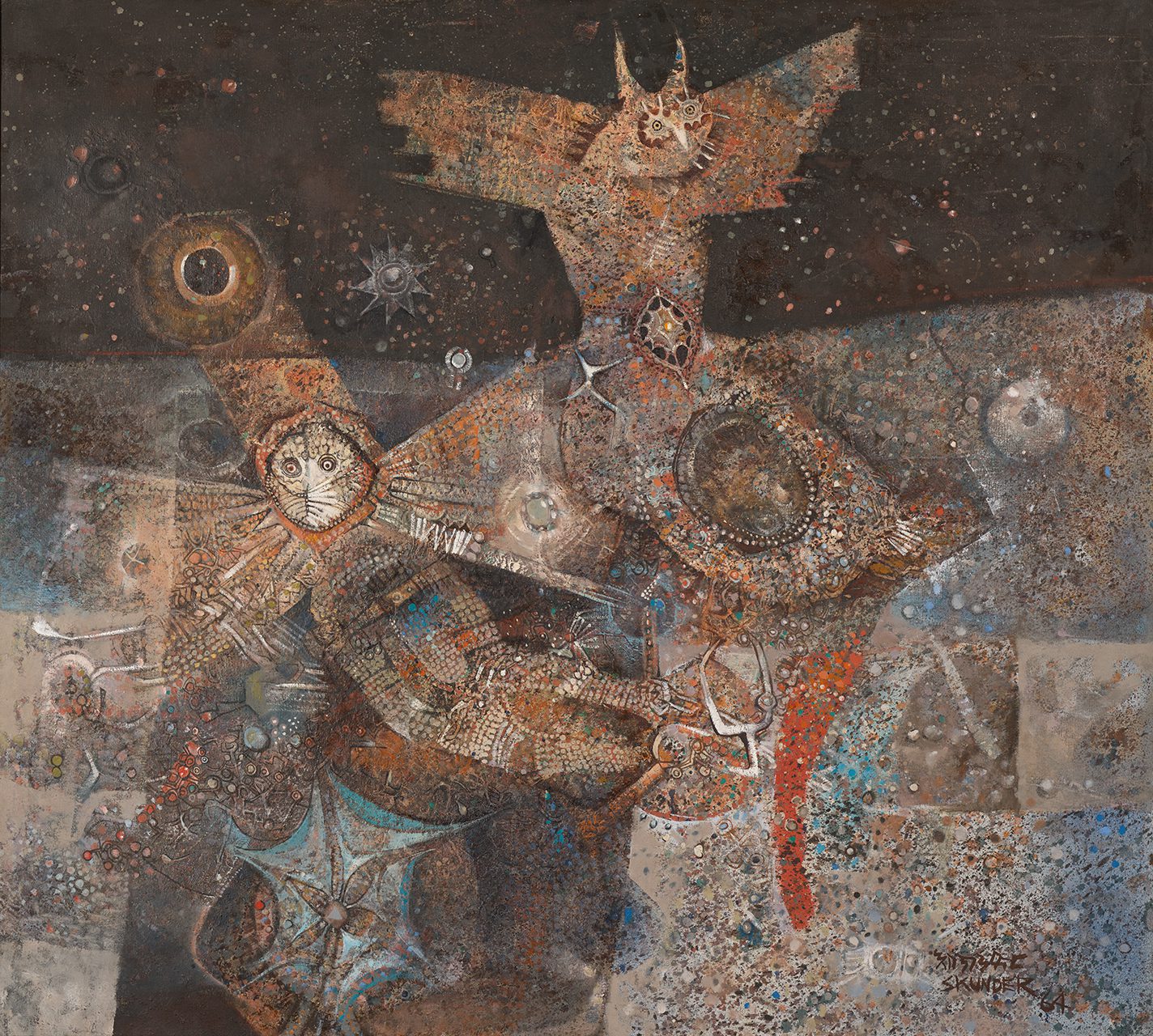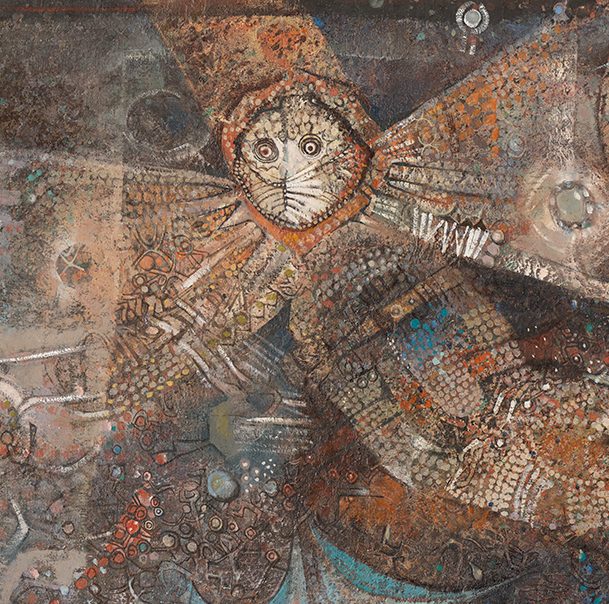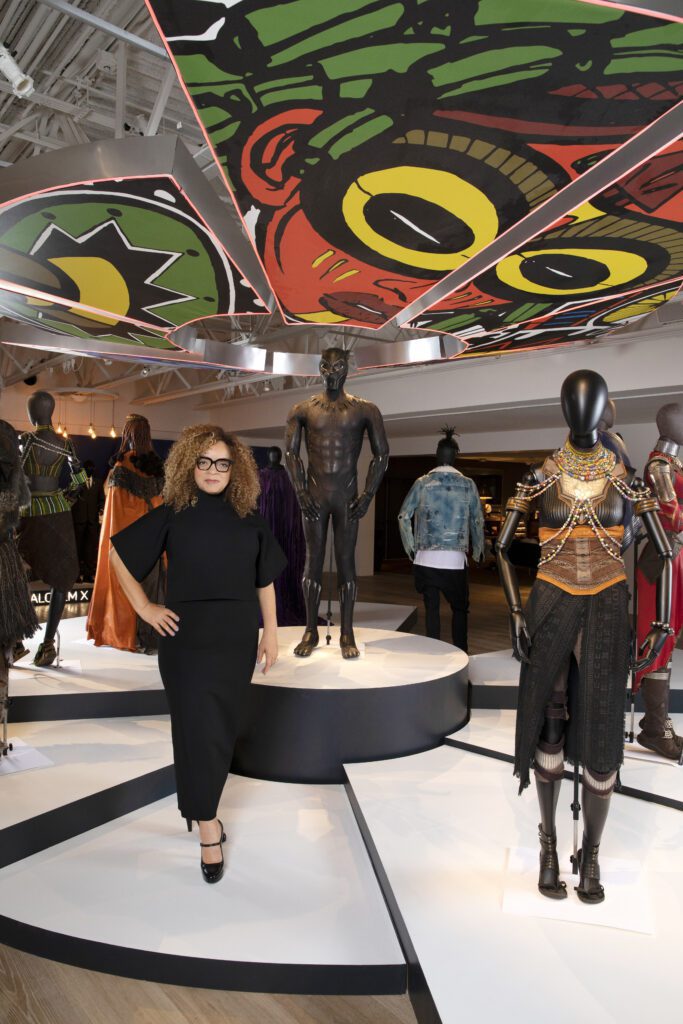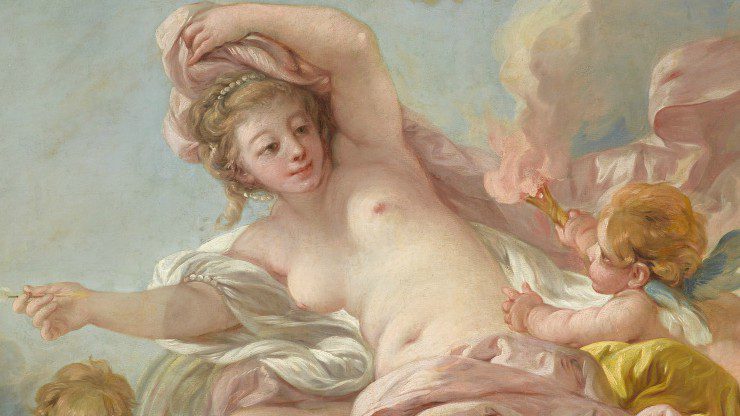The NCMA’s painting Night Flight of Dread and Delight, by Ethiopian-born artist Skunder Boghossian, has long been a visitor favorite at the NCMA. It’s soon back on view at the Museum after having recently won new fans when it appeared in the Metropolitan Museum of Art’s blockbuster exhibition Surrealism Beyond Borders.
I sat down with the Met’s Leonard A. Lauder Curator of Modern Art, Stephanie D’Alessandro, to talk about the show she co-curated with Matthew Gale, of the Tate Modern, and to learn more about the enigmatic, irresistible work of art now returning to the NCMA:

How did the idea for Surrealism Beyond Borders come about?
It was a process … when I was a curator in Chicago, I had the honor of working on Renzo Piano’s Modern Wing, which opened in 2009, and which gave me a lot of time to think about modern art, its presentation in museums and art history books, and the stories we have told. It was at a moment of great opening to a wider world, and it spurred me to begin to unthink the traditional stories I’d learned about modern art.
Surrealism was an interesting subject, given its stated international purview but traditionally tight Euramerican frame. Matthew and I were excited about the potential for not only telling a more balanced story of surrealism but, in the process, challenging the traditional chronology and scope, and introducing some new works of surrealist imagination.

When did you realize you’d like to include this work by Skunder Boghossian?
Skunder’s story was an important one to share for a variety of reasons. In the publication and exhibition, we wanted to make visible some of the ways that artists came to learn about surrealism (for example, through texts, radio broadcasts, publications, meetings, and through art itself) and Skunder’s story—of discovering it while in Paris, through the paintings of Matta and Wifredo Lam—was fascinating.
Skunder’s mix of surrealism with elements of Coptic mysticism, the magic realism of Amos Tutuola’s novels, and Pan-African cosmologies was so powerfully presented in Night Flight of Dread and Delight. It was on our wish list early in the process.
To your knowledge, how was Night Flight of Dread and Delight received by visitors to the show?
It was a frequent stop for me when I toured visitors through the show and always experienced with fascination and admiration. Just yesterday a visitor stopped me in the galleries to share that she had been visiting the exhibition for several days and each time stopped at Night Flight of Dread and Delight and saw more and more. She’s not the only one who will be sad to say goodbye to the painting next week!
NCMA Director Valerie Hillings visits the Met’s Surrealism Beyond Borders:
What takeaways about surrealism did you want visitors to leave with, and how did Boghossian’s work help realize that vision?
Well, there are a number of takeaways—understanding surrealism as the liberating tool it can still be for us today; how it has been a tool for some artists as they struggled with colonialism, displacement, and identity; and provoking questions about why our understanding of surrealism (and modern art) has been so narrowly defined.
Skunder’s work helps to achieve all those goals—such a beautiful, complex, and powerful painting that stands on its own and, at the same time, easily falls in dynamic conversation with other works engaged with surrealism nearby.
“Skunder mixes oil paint and collage in this nighttime navigation to reference Pan-African cosmologies, the Coptic mysticism of Ethiopia, as well as the work of European modern artists for something wholly individual.
—Stephanie D’Alessandro, co-curator of Surrealism Beyond Borders
There seems to be so much going on in Night Flight of Dread and Delight. What’s your favorite detail in the painting?
I get lost in the surface—the areas of collaged canvas, the places where he added medium or drained medium to make his oil paints more shiny or matt (respectively), the liquid quality of the pigment, and the many dots that seem like a mosaic, a kaleidoscope, and brilliant bits in a nighttime sky all at the same time.
Press play for a virtual tour through the exhibition with Stephanie D’Alessandro:
Ruth E. Carter: Afrofuturism in Costume Design
Academy Award–winner in Costume Design, Ruth E. Carter has helped bring characters to life in acclaimed Hollywood blockbusters. The NCMA celebrates the magic of her imagination.
Innovative AIM Program Reaches Thousands
Thinking outside the lines, NCMA outreach programmers connect local artists in rural communities with local students excited to discover the artist within.
Love in the Galleries
This Valentine’s Day we invite you to follow Cupid’s arrow through West Building to discover some amorous works in the NCMA’s collection.



